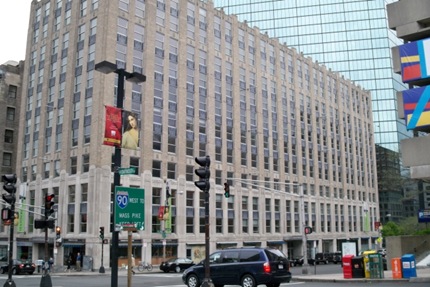The Institute of Supply Management’s January index of non-manufacturing businesses climbed to 50.5, up from 49.8 in December – readings above 50 signal growth. Correspondingly, the Institute for Supply Management’s manufacturing index rose to 58.4, which represented the 6th straight month for expansion. The Consumer Confidence index increased to 55.9, up from 53.6 in December 2009, and significantly up from 25.3 in February of 2009. All great news, but…
Changing Landscape of Lending Markets
Banks nationwide stopped raising the bar for borrowers; however, they continue to tighten standards on residential real estate lending. Most banks believe delinquencies on commercial and industrial loans will decline in 2010 – a position I strongly hope is true (but are you kidding?). With $1.2 trillion of debt scheduled to roll between now and 2013, and given the limited ability to refinance those loans, not to mention the required huge influx of equity that is inevitably necessary to maintain loan-to-value ratios, do you think this may be problematic?
Property funds have raised $135 billion along with an additional $30+ billion by REITs; commercial lenders now consider the norm a loan-to-value ratio in the 60% to 65% range with banks making short-term loans on a long-term repayment schedule, while life (insurance) companies are looking at longer-term loans. Where does this leave our commercial property values?
There is debt available for core (the best of the best) properties with little tenant rollover; however, at those lower loan-to-value ratios, capitalization rates (valuing an operating income stream) seemed to have bottomed out for those core properties. Is this because values have reached the bottom in this class of property, or is it because all that money is burning a hole in the fund manager’s pocket. Are the fundamentals really there?
Say for example, you financed a project at 80% loan-to-value three years ago, that loan is probably at 110% of value and at today’s terms they might be lucky to refinance at a 65% loan-to-value; the additional money will have to come from somewhere and that is for the loans that meet the more stringent standards.
Tishman Speyer NYC Debacle
Look at Tishman Speyers’ New York debacle, the purchase of two NY apartment complexes for $5.4 billion with $100 million as their equity portion (plus other equity partners money)with loans of approximately $3.6 billion, the value of said purchase is now estimated at $1.8 billion. And these are very smart guys.
Massachusetts & US Economic Indicators
Massachusetts’s economic activity declined for the sixth consecutive quarter at the end of last year as holiday shoppers were cautious and unemployment spiked. In contrast, the US economy grew by 5.7% last quarter on top of a positive 2.2% the prior quarter according to the Department of Commerce. How much of that growth was due to stimulus money and how much was inventory replacement remains to be seen – wait until this quarter to see what is reported.
Home construction figures fell to 557,000 units, still posing a significant risk to economic recovery. In normal/good times, this figure could be expected to be over one million units of production. However, applications for building permits rose. The National Association of Home Builders index fell to 15 last month, further indicating poor construction conditions – readings below 50 mean most respondents view the conditions as weak.
Net occupied space in Boston shrank by over 4 million square feet during 2009 (and this is better than the rest of the nation), while vacancy rates approached 20%. State home sales showed their first increase since 2004, however, median prices continue to decline (year to year). The question is how much of this was tax credit driven? Foreclosures fell over the same period, however, the precursor to foreclosure is ‘petitions’, and despite the widely broadcast news that foreclosures were down 25% in Massachusetts, petitions are up.
Libor versus Labor Rates
LIBOR vs LABOR…the former being so low that it is keeping rates low and commercial debt affordable and maybe even repayable. LABOR on the other hand continues to shed jobs and the future for commercial space looks bleak. If the LIBOR rate rises, the ability to pay debt and refinance will be significantly compromised. Millions of people have lost their jobs, their homes – the political influence of the financial sector secured a huge bailout and while Wall Street benefited Main Street suffered. Massachusetts’s employment is back to the same level as two decades ago – where is growth going to come from?
So what does all this mean – conflicting information, some good news, some bad – in times of uncertainty most people/institutions sit on the sidelines and wait.







